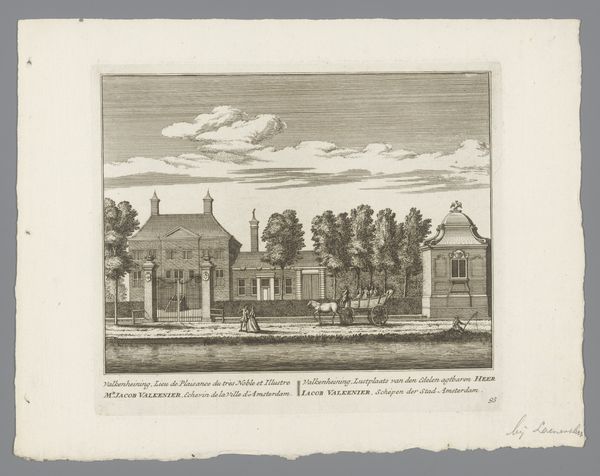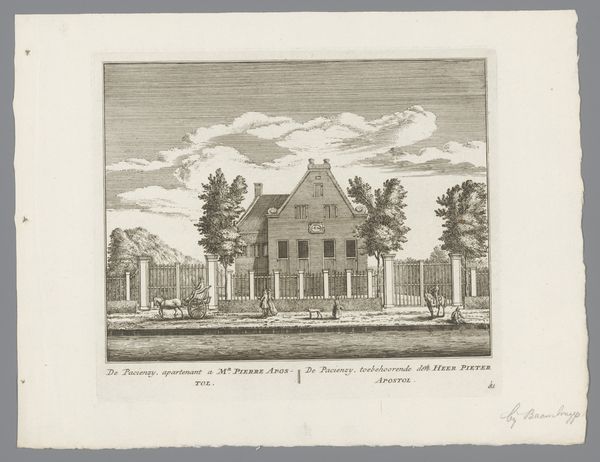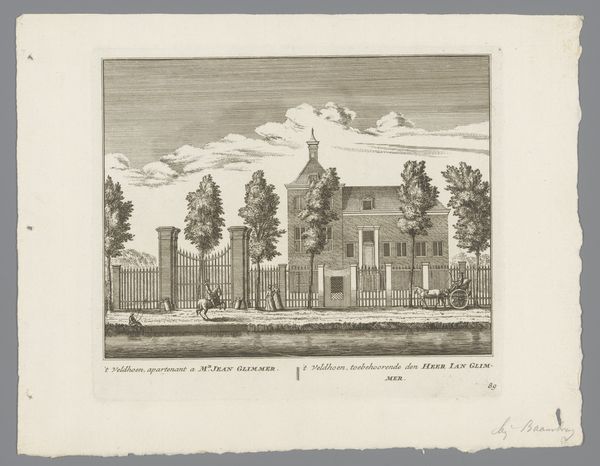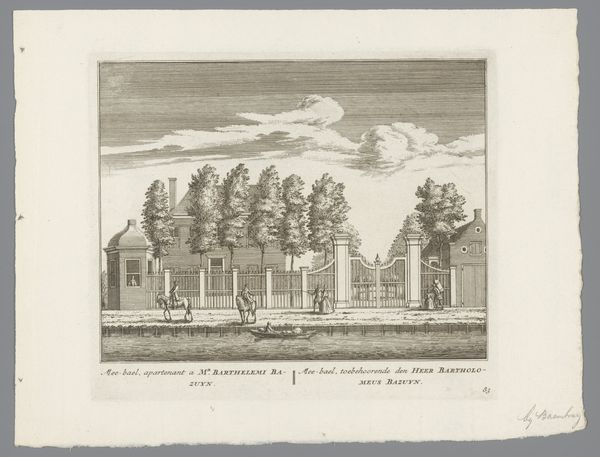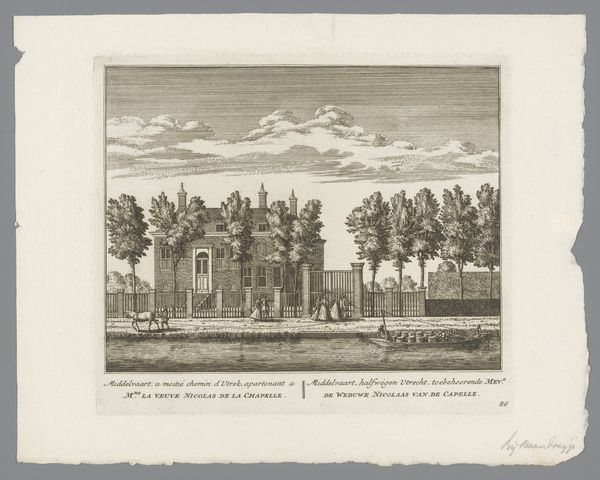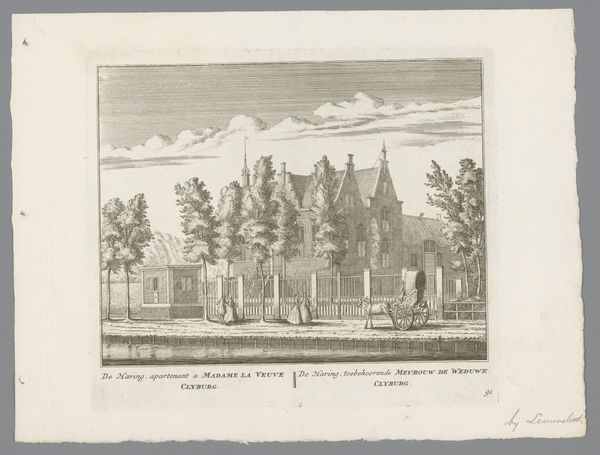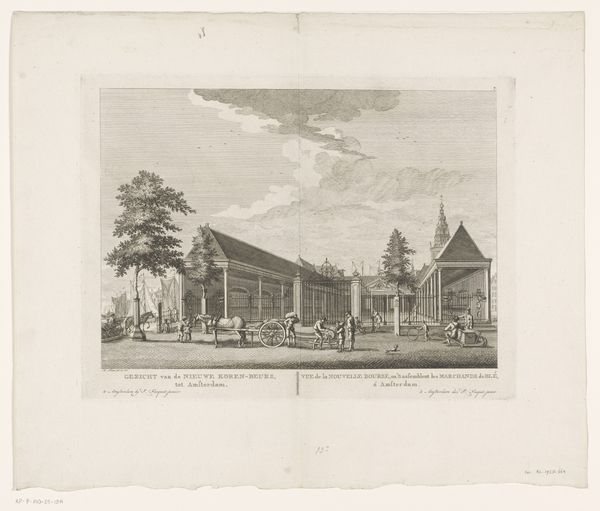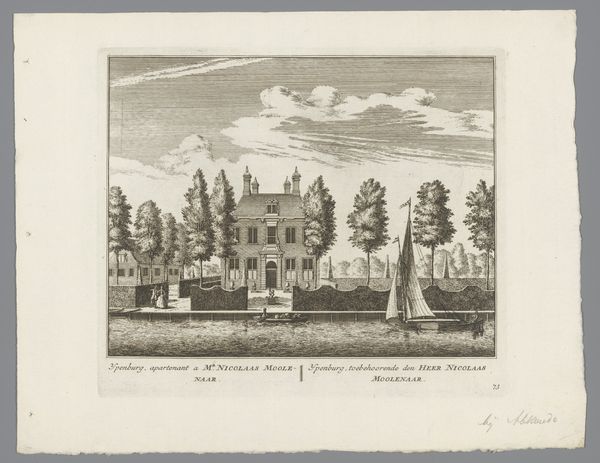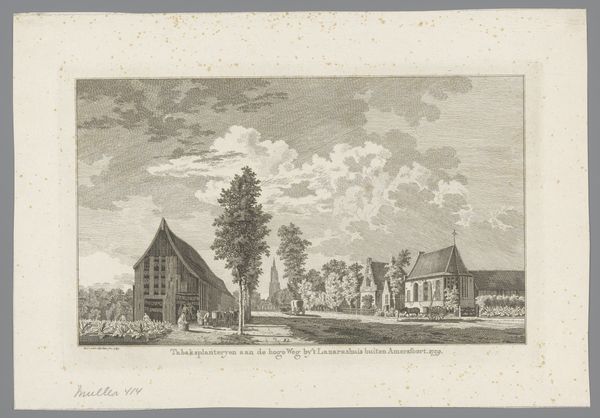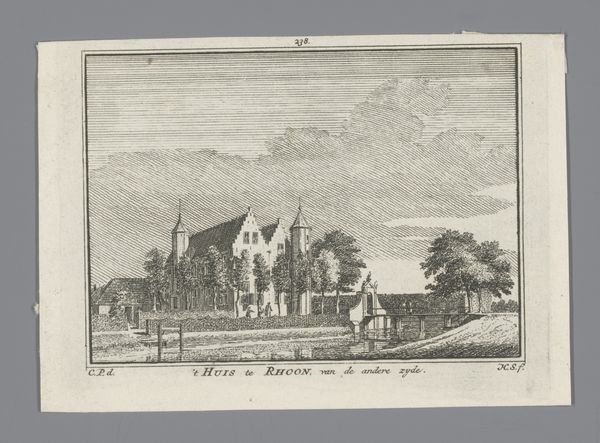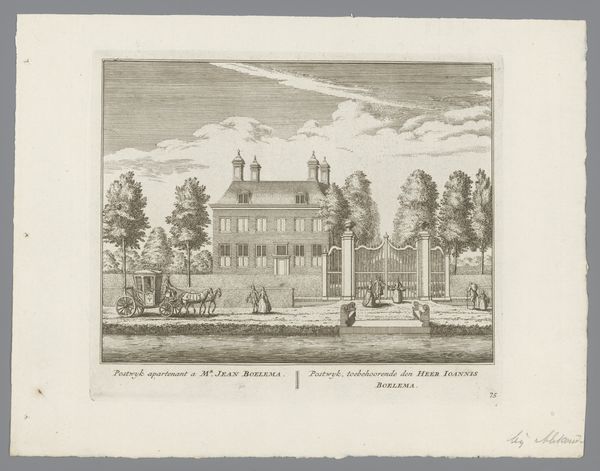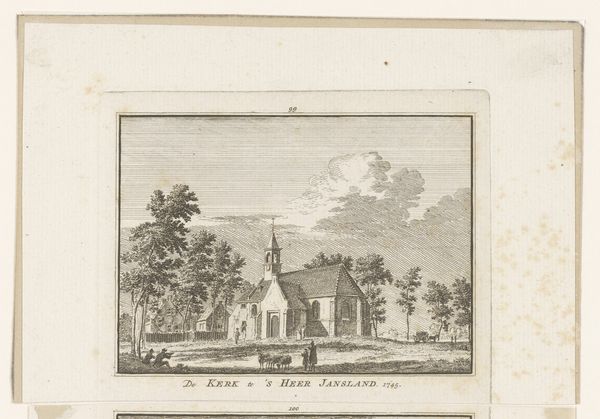
print, etching
#
baroque
# print
#
etching
#
landscape
#
cityscape
Dimensions: height 174 mm, width 200 mm
Copyright: Rijks Museum: Open Domain
Curator: Here we have an etching by Abraham Rademaker, made around 1730, called "Gezicht op de buitenplaats Overdorp, in Baambrugge"—a view of the Overdorp estate in Baambrugge. It resides in the Rijksmuseum collection. Editor: It's a quaint, almost serene scene. The level of detail, given it’s an etching, is quite remarkable. There's something both charming and a bit rigid about the composition; I almost get the feeling of looking at a stage set. Curator: Exactly. The image shows Overdorp, and what’s interesting to note is its context. Etchings like these served as a kind of property survey. The owners, the Klerck family, had it documented, likely for prestige. Think of it as a 18th-century status symbol of land ownership. Editor: That's a valuable point, given the political landscape of the time and how the power dynamics were mapped over the ownership and access to lands and resources. Curator: Certainly. You can see this country estate represented in meticulous detail. The clean lines, the order of the composition; the landscaping, which signifies control over nature itself. Notice the people in the composition almost fade into the background – mere elements within the orderly structure of the estate. Editor: They do seem secondary, almost as decoration to emphasize the opulence. Is there more that this etching, and other similar artworks from that time, tell us about labor or how the local communities fit within this picture? What were the working conditions, their freedoms…? Curator: Unfortunately, these particular visual materials tell us very little about that directly. Land ownership was a source of status and economic prosperity, and this imagery was often deployed to assert one’s rights. The narrative of working people and communities requires significant interpretation and sourcing from parallel archival materials. Editor: So while it presents this air of calm and order, it obscures a much more complex narrative. A visualization of power, rendered carefully as a piece of promotional material, almost. Curator: In a way, yes. Rademaker's etching gives us an intimate window into the world of the Dutch elite. Editor: It is important for the audiences to develop an eye to “read” those windows through intersectional views of class, gender, race… Curator: Precisely! It prompts questions about access and privilege. A good way of critically examining our past through the lens of art. Editor: Yes, by exploring the multi-layered stories behind artworks, we enhance our understanding of how identity and social roles were constructed and maintained in past societies.
Comments
No comments
Be the first to comment and join the conversation on the ultimate creative platform.
